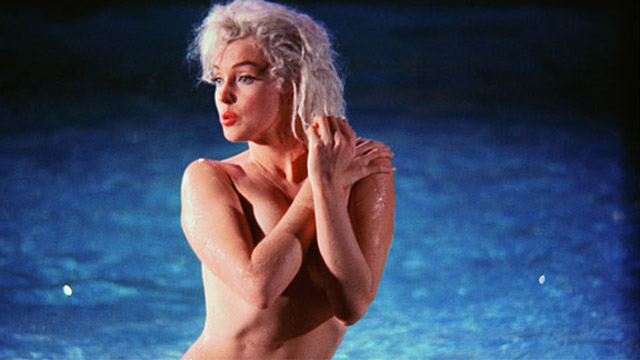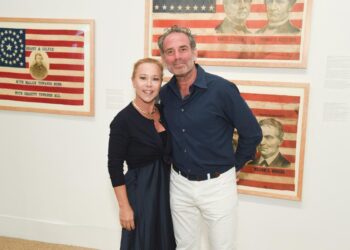Lawrence Schiller, a New York Times bestselling author who recently released a new memoir about Marilyn Monroe entitled “Marilyn & Me,” came to support East Hampton Library’s 9th annual Author’s Night this summer on August 10, 2013. In addition to the reception and book-signing, Schiller also attended a private dinner in the Hamptons at the Amagansett home where his muse, Marilyn, once lived with husband Arthur Miller. During the intimate evening guests were given an opportunity to get a more inside view into the process behind his work.
Schiller has had an illustrious career that has seen him take on many roles. From photographer, to journalist, to bestselling author, to Emmy (“Peter the Great”) and Oscar (“The Man Who Skied Down Everest”) winning director, he has certainly had a long and successful life. He began to transcribe these incredible experiences for his forthcoming autobiography, but rightly decided that his encounters with the enigmatic Marilyn Monroe deserved special attention.
“I’ve lived a very, very eclectic life and Marilyn is one episode of that life. To see whether I was writing this autobiography in a style that would work, I decided to publish this chapter as a separate book,” he explained
“Marilyn & Me” was released simultaneously in two editions, one with Nan Talese and one with Taschen. The Taschen edition is a limited offer with significantly more photographs, over 100 rare and never-before-seen shots of Marilyn Monroe from the 1960’s, bound in deep blue silk that can be yours for a mere $1,000.
Both books contain and account that details the events of Schiller’s two encounters with Marilyn Monroe, once in 1960 when he photographed her on the set of her film “Let’s Make Love,” and again in 1962 on the set of the unfinished “Something’s Got to Give.”
“I was still insecure and concerned about proving myself as a photojournalist,” he said. Schiller was just 23 at the time of the first shoot, and despite the amazing opportunity photographing Monroe gave him, he admitted that he thought of the job as just another assignment without realizing the full magnitude of the situation. “The emotions were still ‘how do I prove to the editors that I can get an image that nobody else can get?'”
 |
|
Another newly released photo of Marilyn on set of “Something’s Got To Give” (Copyright © Polaris Communications, Photograph by Lawrence Schiller). |
The two developed a relationship over the years, one that was as intimate as it was short-lived. Schiller’s account of this relationship is especially fascinating and powerful because it captures a side of Marilyn that many people never saw. The image and legacy Marilyn left behind is one of beauty, confidence, and grace, and while Schiller’s Marilyn definitely displays these characteristics, she also has a much darker side. Schiller portrays a young, vulnerable woman with a troubled past who often struggled with her own insecurities as an actress. In life, Marilyn never got the recognition she felt she deserved. She was never even nominated for an Oscar and was often overcome with jealousy and spite towards other female stars.
The book concludes with Marilyn’s ultimate and untimely demise. Although Schiller touches on the conspiracy theories surrounding her death, he doesn’t dwell on the unknown.
“There didn’t seem to be evidence that there was foul play. You can’t prove a negative. I can’t say that I’m definitive, but I can say that there is no credible evidence that Marilyn was murdered,” he said.
His stance is appropriate, as this book really is an account told exclusively from the perspective of Lawrence Schiller. While Marilyn is obviously a powerful and central part of the story, Lawrence is the narrator and in a sense the protagonist. We meet and experience Marilyn through his eyes.
As Schiller himself put it, “the book is a different window into Marilyn through somebody else’s experience. I’m not critiquing her, I’m not judging her, I’m just telling about this relationship.”
Lawrence Schiller’s full biography is expected to be published in 2015.






